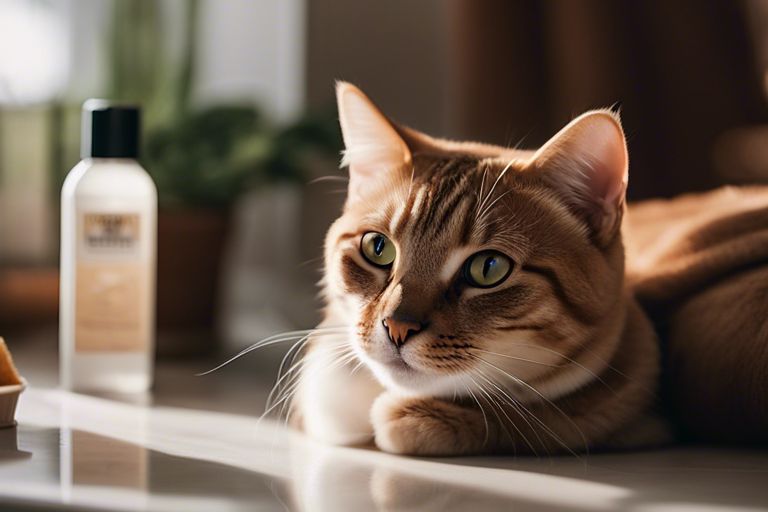Ensuring clean and healthy ears for your feline companion is crucial for their overall well-being. Neglecting this aspect of their care can lead to infections, discomfort, and even hearing loss. Fortunately, there are simple steps you can take to prevent these issues and keep your cat’s ears in top condition. From regular cleaning to identifying potential problems, this guide will provide you with the essential tips and tricks for maintaining your cat’s ear health.
Key Takeaways:
- Regular Cleaning: Regularly clean your cat’s ears to prevent wax build-up and infections.
- Gentle Cleansing: Use a veterinarian-approved ear cleaner and take care when cleaning your cat’s ears to avoid causing damage.
- Professional Check-ups: Schedule regular vet visits to have your cat’s ears checked for any signs of infection or other issues.
- Watch for Signs: Keep an eye out for any redness, discharge, odor, or excessive scratching around your cat’s ears, as this could indicate a problem.
- Consult a Professional: If you are unsure about how to properly clean your cat’s ears, or if you suspect an issue, seek advice from your vet.
Recognizing Ear Health Issues
Even with regular cleaning, your cat can still develop ear health issues. It’s important to be able to recognize the signs of potential problems so you can address them early. For more information on how to clean your cat’s ears if they’re getting gunky, you can refer to How to Clean Your Cat’s Ears if They’re Getting Gunky.
Common Symptoms of Ear Problems
Common symptoms of ear problems in cats include excessive scratching of the ears, head shaking, redness or swelling of the ear canal, discharge or odor from the ears, and hearing loss. If you notice any of these signs, it’s important to address the issue promptly to prevent further complications.
When to See a Veterinarian
If you notice any strong or persistent symptoms of ear problems, such as severe redness, swelling, or discharge, it’s crucial to take your cat to the veterinarian for a thorough examination and appropriate treatment. Ignoring these symptoms can lead to more serious health issues for your pet, so don’t hesitate to seek professional help.
Cleaning Your Cat’s Ears
Obviously, keeping your cat’s ears clean is an essential part of their overall hygiene and health. Regular ear cleaning can help prevent ear infections and other ear-related issues, so it’s important to know how to properly clean your cat’s ears.
Preparing for Ear Cleaning
Before you start cleaning your cat’s ears, it’s important to gather all the necessary supplies. You will need a mild cat-safe ear cleaner, cotton balls or pads, and a towel. Choose a time when your cat is calm and relaxed, such as after a meal or a play session, to minimize stress for both you and your cat.
Step-by-Step Guide to Cleaning
First, hold your cat securely on your lap or any comfortable surface. Gently lift the earflap and hold it upright to straighten the ear canal. Then, apply a few drops of the ear cleaner into the ear canal, massaging the base of the ear for 20-30 seconds. Let your cat shake their head to remove the excess cleaner, and then use cotton balls or pads to gently wipe away any dirt or debris from the inside of the ear. Repeat the process for the other ear. Be gentle and patient, and if you notice any redness, swelling, discharge, or a foul odor, stop immediately and consult your veterinarian for further examination.
Key Dos
| Do: | Use a mild cat-safe ear cleaner |
| Do: | Choose a calm and relaxed time for ear cleaning |
Key Don’ts
| Don’t: | Use cotton swabs, as they can push debris further into the ear |
| Don’t: | Force your cat to undergo ear cleaning if they appear distressed |

Preventing Ear Problems
Keep your cat’s ears clean and healthy by taking preventive measures to avoid ear problems. By incorporating regular checks, proper maintenance, and a healthy diet, you can minimize the risk of ear issues and maintain your feline friend’s overall well-being.
Routine Checks and Maintenance
Perform routine checks on your cat’s ears to identify any signs of irritation, redness, or abnormal discharge. Keep the ears clean by gently wiping the outer ear with a damp cloth or a specialized ear cleaner recommended by your veterinarian. Avoid inserting anything into the ear canal and seek professional help if you notice any abnormalities.
Diet and Supplements for Ear Health
Ensure that your cat’s diet includes essential nutrients such as omega-3 fatty acids, which promote ear health. Consider incorporating supplements specifically designed to support and maintain healthy ears. Consult with your veterinarian to determine the most suitable dietary options for your cat and discuss any potential supplements that may benefit their ear health.
The Importance of Keeping Your Cat’s Ears Clean and Healthy
The health and cleanliness of your cat’s ears are crucial in ensuring their overall well-being. By regularly inspecting and cleaning your cat’s ears, you can prevent ear infections, mites, and other issues that could cause discomfort or pain for your feline friend. You can keep your cat’s ears clean by gently wiping them with a damp cloth, using specialized ear cleaners recommended by your veterinarian, and scheduling regular check-ups to ensure everything is in order. Additionally, be mindful of any changes in your cat’s behavior or appearance of their ears, as these could be signs of underlying health issues. Taking these steps will help ensure that your cat’s ears remain healthy and your furry companion stays happy and comfortable.
FAQ
Q: How often should I clean my cat’s ears?
A: You should clean your cat’s ears once a month, or more frequently if they tend to accumulate a lot of wax or dirt. It’s important not to overclean, as this can lead to irritation and even infection.
Q: What is the best way to clean my cat’s ears?
A: Start by gently holding your cat and wrapping them in a towel to keep them calm and still. Using a cotton ball or pad, apply a veterinary-approved ear cleaner to the ear and gently massage the base. Your vet can recommend a suitable product. Then, use a clean cotton ball to wipe away any excess cleaner and dirt. Never use cotton swabs or insert anything into the ear canal.
Q: How can I tell if my cat has an ear infection?
A: Signs of an ear infection in cats include increased scratching or pawing at the ears, shaking their head frequently, redness or swelling in the ear canal, a bad odor coming from the ears, and unusual discharge. If you notice any of these symptoms, it’s important to contact your veterinarian for a proper diagnosis and treatment plan.

Jayley, a devoted cat enthusiast, also writer for other cat blog as well. She aims to dedicated to providing comprehensive information, insights, and advice on everything you’d ever want to know about our whiskered companions.
